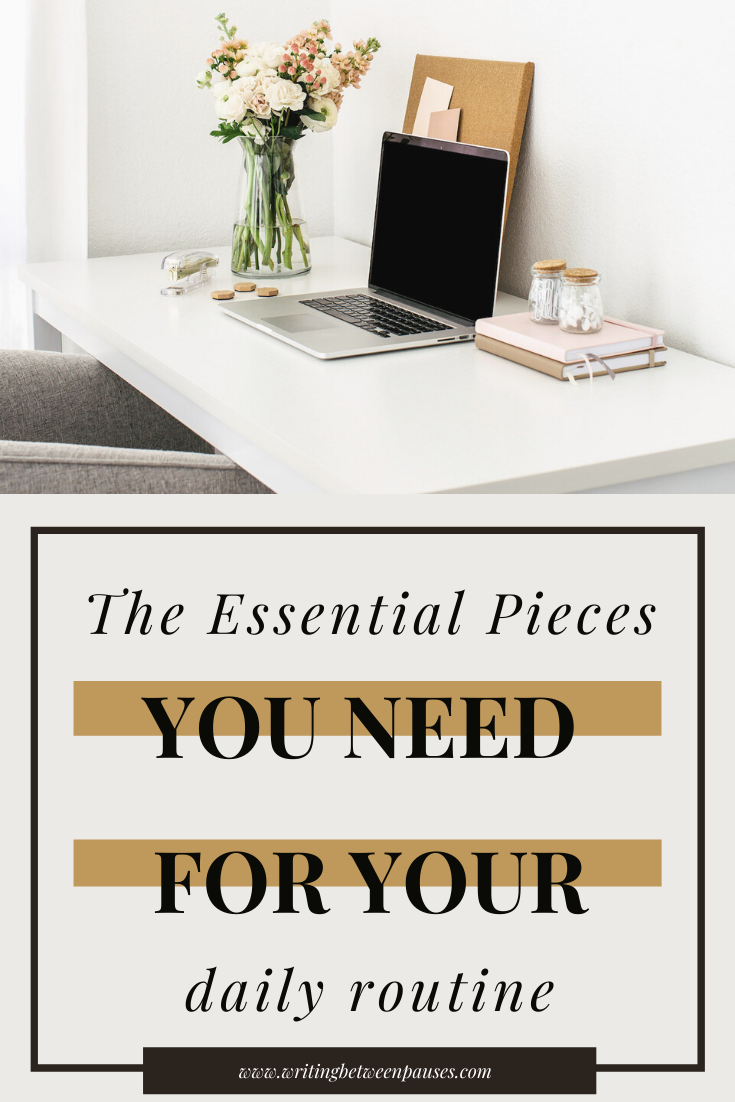Welcome to my new series all about routines. While developing my own routine over the last few weeks of stay-at-home orders and quarantine, I’ve found myself writing down notes about developing my routine, working from home, having kids, keeping self-care in my day, and staying sane! I wanted to share some of this information with you, to help you succeed and feel more rested, recharged, and productive. You’ll be able to check out all the posts from this series here.
You might be thinking: Michelle, maybe this should have been your first post on the subject of routines.
Well, when I originally outlined this series, I had it first—then I decided to save it for last. A lot of the reason was because I wanted to offer solutions for those who were looking for more structure in their lives. A secondary reason was, however, that having a reason for a routine is extremely personal—and in many cases, why I choose to have a routine might be completely different reasons from anyone else.
There are so many benefits to having a routine that works for you—but that’s also not what we’re here to talk about. We’re talking reasons why: why I started developing a morning and daily routine; what makes it work for me; and why I keep doing it (even if sometimes I do get tired). Let’s talk it out.
I’m not a spontaneous person.
Plain and simple: I have never been that friend that people describe as “so spontaneous!” I am indecisive; it takes ages for me to decide to do anything. I am very easily distracted and I have trouble focusing. So while I’m not spontaneous, I do get off track and in the zone very easily.
Part of the reason I love having a routine is because it eases those decision-making moments for me; instead of waking up and deciding what to do, I have my routine. I don’t have to make one decision that will make me just a little bit more fatigued when I have to make a decision later. I’m not spontaneous and making decisions on the fly simply isn’t my thing—so, routine it is.
It helps ease my stress level.
I’m fairly high strung. This is a descriptor that has always eaten at me: I hated hearing myself described as “sensitive” or “high strung”. I know a lot of people don’t necessarily know what this means, but here it is: it means I’m nervous a lot. Like, most of the time. If you meet me in person, my number 1 vibe is “nervous.” I’m basically this meme:
It sucks to have that be a part of my personality, but it just is. I’m fairly frequently nervous. Which means I’m highly prone to experiencing fairly severe stress levels. It’s something I’m working on, but having a standard routine, with a standard way of doing things, helps me feel less nervous, stressed, and highly strung.
It gives my day structure.
Days when I don’t have anything to do are a nightmare. If my to do list is empty, and stay-at-home orders are still in place, I turn into a monster. I have trouble deciding what to do and I start feeling more and more anxious.
My day needs structure. So even if I don’t have anything on my to do list, I will go through my routine: showering, getting ready for the day, drinking my coffee, going through the motions. Just to keep my day having that backbone of structure. Then I’ll fill it in with activities as I can: picking up those little tasks I’ve been putting off, working on future planning, or more. I need the structure of a routine. I need it to survive, otherwise I will be the nervous dog in the vest even more.
It is comforting.
There is comfort is ritual, in knowing what to expect. For me, that’s what made March, April, May (I have completely forgotten the months of April and May, to be honest, I had trouble writing this list??), and early June so hard. Stay-at-home orders completely changed my days and their routine. I was a mess for a while and I had trouble finding comfort. It’s because I didn’t have my routine anymore, I felt completely adrift. But being able to find a new routine and settle into something is incredibly comforting. If you find yourself frequently adrift and feeling unsure, I cannot recommend routines enough.
I hope you’ve loved my blog series on routines! I’d love to hear your thoughts as well.
As an exciting update, I have just launched my new Freebies page! This page is not accessible from my home page—it’s only for the ones who stick around to the end of this post (or who find it on Pinterest, hint hint!). You can access it HERE and grab 15 FREE products I’ve made over the years—including some I made and ended up abandoning the blog post for. Thanks for reading and I hope you love the freebies!







